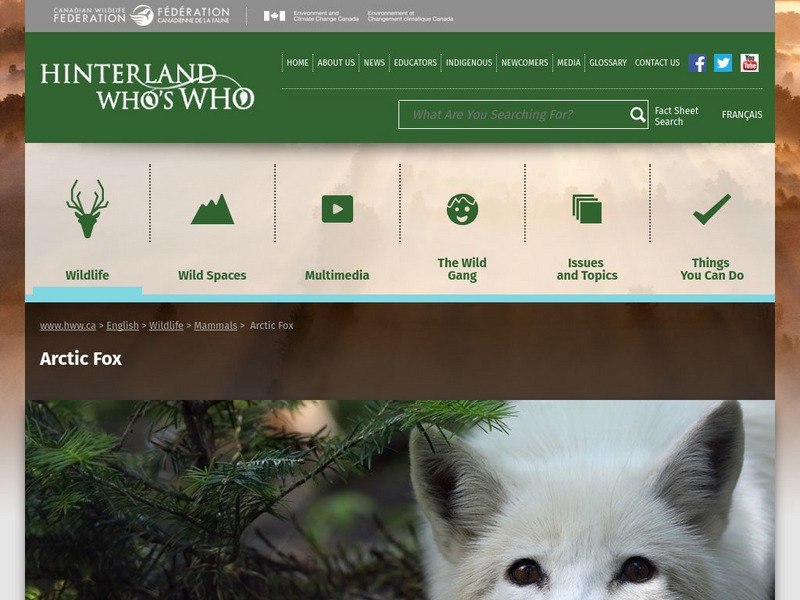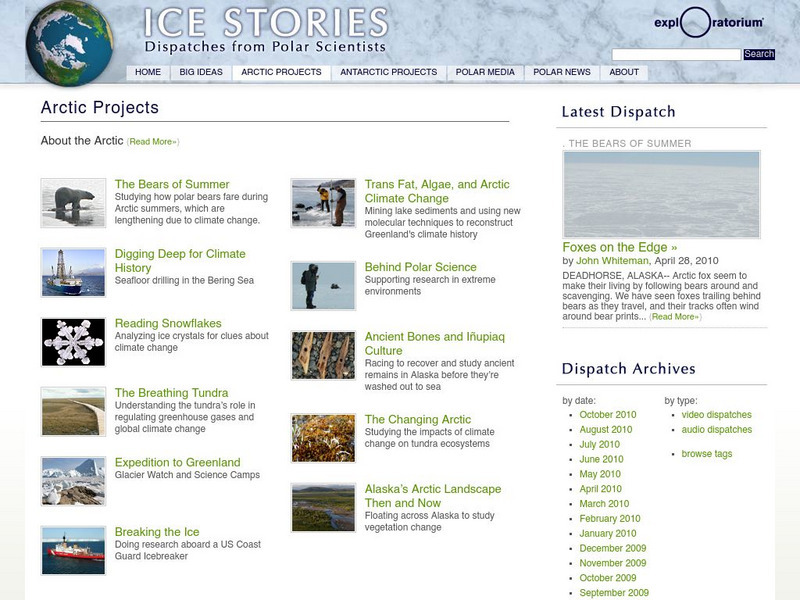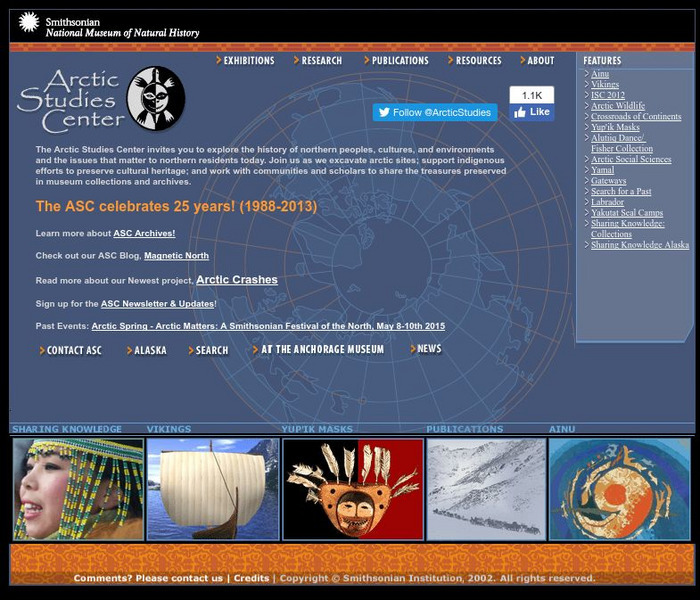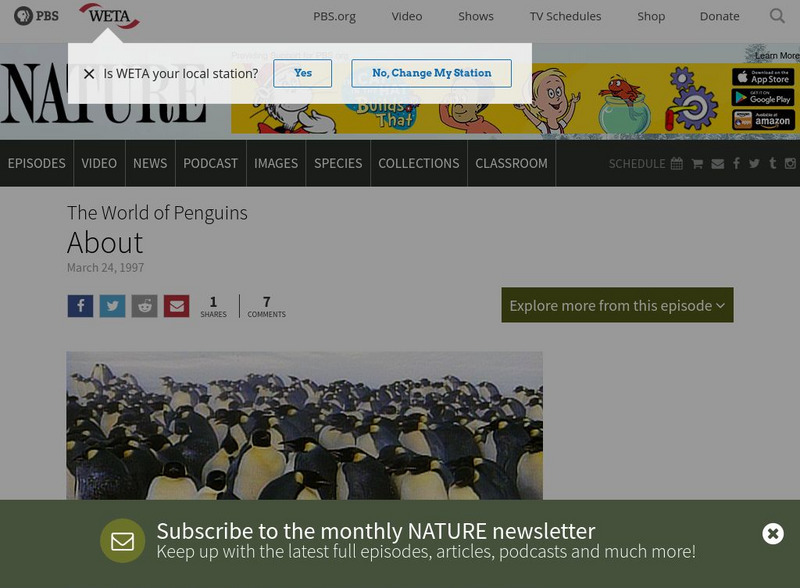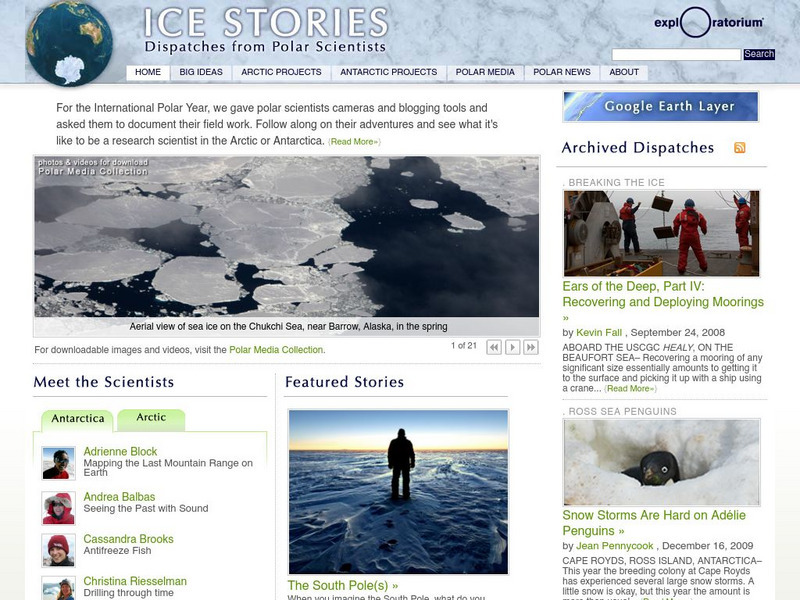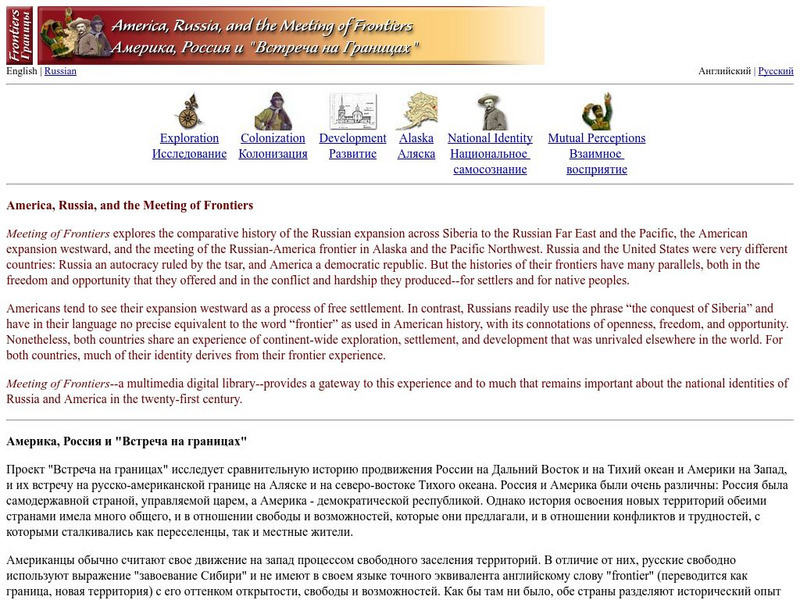American Museum of Natural History
Climate Change
It actually is possible to have too much of a good thing when it comes to climate change. A slide show lesson describes how burning fossil fuels contributes to climate change. Individuals read about the scientific process and the...
American Museum of Natural History
Tornadoes Spinning Thunderstorms
Tornado winds can reach more than 200 miles per hour. Learners explore wind speeds and more characteristics of tornadoes with an online lesson. They learn how tornadoes form and how scientists attempt to predict them. Can be used as an...
PBS
Pbs: Scientific American Frontiers: The Arctic Our Global Thermostat
Scientists believe that the climate in the Arctic is an indicator of global climatic conditions. Learn what makes the Arctic so unique and how scientists use this information to predict global changes. Informative photos accompanied by...
Canadian Wildlife Federation
Hinterland Who's Who: Arctic Fox
Get the facts about the Arctic Fox. Besides finding a physical description of Canada's smallest fox, you'll also learn about some of its unique facts and characteristics. Also included in this Mammal Fact Sheet on the Arctic Fox is...
NOAA
Noaa: Arctic Theme Page
Information on the Arctic for students, teachers, and other interested groups includes changes in the ecosystem and climate.
Exploratorium
Exploratorium: Ice Stories: Arctic Projects
Scientific research projects being done in the Arctic are showcased here. Projects cover a variety of topics, e.g., polar bears, the impact of climate change and glaciers. There are numerous links to articles, as well as video and audio...
University of Waterloo (Canada)
University of Waterloo: Archaeology in Arctic North America
A resource regarding the Arctic region and a look at some of the recent archaeological projects there. The introduction offers a short look at the geography and history of the area.
Ohio State University
Beyond Penguins and Polar Bears
This online magazine for educators is geared to integrate inquiry-based science and literacy focused in the concentrated area of the arctic and antarctic.
Ohio State University
Beyond Penguins and Polar Bears
This online magazine for educators is geared to integrate inquiry-based science and literacy focused in the concentrated area of the arctic and antarctic.
Smithsonian Institution
National Museum of Natural History: Arctic Studies Center
Tour this Smithsonian site and learn about the cultures of the North Pacific Rim and arctic wildlife in this site. This site provides virtual tours, videos, and music!
Other
Canadian Arctic Profiles
Detailed sections providing further information on the Canadian Arctic's exploration, climate, maps, migration, and indigenous people, make this resource useful for many topics. Put together with images, this resource is useful for high...
Canada Science and Technology Museum
Kids Zone: Arctic Diary
Have you ever wanted to be a scientist in the Arctic? Learn from the journals of a research group working on the Arctic sea ice at the northerntip of Canada. Global warming, security of northern routes, pollution, and changes to the...
PBS
Pbs: Nature: The World of Penguins
What do you know about the world of penguins? This PBS site features information about these flightless birds. Come and check out this extraordinary resource.
Other
Social History of the North: Circumpolar History Timetables
Find information on 37,000 years of civilization in the far North, including Russia, Northern Europe, and North America. This site is well organized, frequently updated, and offers an extensive bibliography.
Woods Hole Oceanographic Institution
Polar Discovery: Compare the Poles
A detailed comparison of many aspects of the two polar regions. Includes physical features, seasons, weather, types of ice, plants and animals, human population, and climate change.
Exploratorium
Exploratorium: Ice Stories: Dispatches From Polar Scientists
During the International Polar Year, scientists descended on the Arctic and the Antarctic in droves. While there, they documented their experiences and research work. That rich database of information, covering November 2007 to October...
Smithsonian Institution
National Museum of Natural History: The Living Yamal
A Smithsonian site that tells of the history and culture of the Yamal people of Siberia.
Other
Canada and the Circumpolar World
This government resource has information about Canada's policies in the Arctic, and the activities it is involved in to protect and maintain sovereignty over the Canadian Arctic.
PBS
Pbs Learning Media: A Subsistence Culture Impacted by Climate Change
This short video explains how warmer temperatures in the Arctic are transforming the ecosystem and affecting the Athabaskan people, threatening their way of life. [2:59]
Other
U.s. Antarctic Program
This government site delves into the research of all aspects of the Antarctic region including its ecosystems, its impact on the climate, and aerospace.
Other
Polar Continental Shelf Project for Kids!
Visit this resource to learn about the geography, wild life, plants and people of Polar Continental Shelf in Canada's Arctic. Students can take a quiz to see how much they have learned.
Enchanted Learning
Enchanted Learning: Polar Bears
Learn more about the polar bear when you visit this informative site that features a diagram of the polar bear and information on its diet, habitat, anatomy, reproduction and so on.
Canadian Wildlife Federation
Hinterland Who's Who: Muskox
Get the facts about the muskox. Besides finding a detailed description of this resident of Canada?s arctic tundra, you?ll also learn about some of its unique facts and characteristics. Also included in this Mammal Fact Sheet on the...
Library of Congress
Loc: America, Russia & Frontier Meeting
This Web site is a multimedia English-Russian digital resource that describes the American westward-Russian eastward explorations and their frontier meeting.



